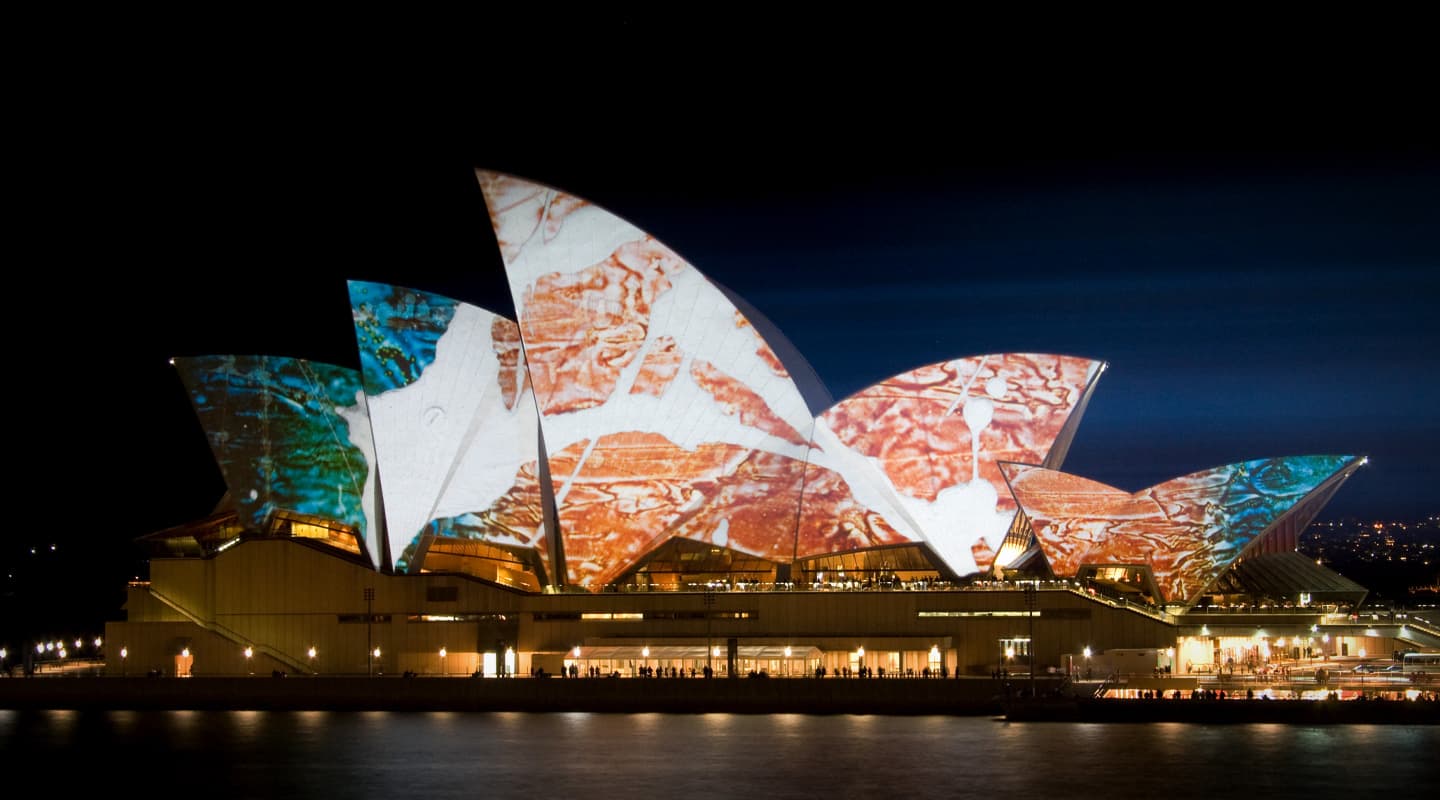
Vivid 2009
Sydney powers-down but lights-up.
Text:/ Tim Stackpool
Images:/ Zac Shenker
As cities around the world vie for the title of most liveable and most sustainable, the City of Sydney Council continues to gain the attention of the world with cultural events, tourist destinations, and the planet’s best New Year Eve fireworks. The urban landscape of the city has for years also lent itself as the backdrop to luminous creative endeavours, turning the night-time skyline of the town into a feast of luminescence.
As part of the Vivid Sydney festival, Smart Light Sydney showcased a range of lighting techniques. These installations were required to include clever design, innovative technology, reusable materials, energy efficiency and reduced light wastage. One major installation, the Light Walk, featured 25 light art sculptures, including seven works produced by international artists from countries including the UK, Portugal, Germany and Switzerland. As visitors strolled around historic parts of the city, they encountered ‘sculptures’ as diverse as pedal-powered artwork on the banks of Circular Quay to a real-time weather pattern projection on Observatory Hill, from a display of moving people creating a human flag in The Rocks to a four-storey-high pot of fibre-optic flowers swaying in the breeze in Cadman Park.
EASILY LED
Festival director and founder Mary-Anne Kyriakou was extremely keen to ensure the artists and designers created a new work that considered an energy conscious approach to the design. “All designers were encouraged to be innovative with LED technology along with exploring the theme of City and Memories,” she said. “Light is all about atmosphere and this builds and creates our memories of people and spaces. One of the key selection criteria was the work needed to engage with the public.”
Smart Light Sydney operated on three core principles. The installations were required to support energy reduction, encourage best practice in lighting design and reduce obtrusive light into the night sky. As for the curatorial aspects of the works; the designs were expected to embrace an architectural lighting approach, incorporating a sense of the theatrical by way of a marriage between music and light. “I consider all of these areas to be part of public light art,” Kyriakou said.
The technical aspects of the works were project managed by Andy Webster, with consultancy by Andre Kecskes and Mark Hammer of Creative Lighting & Audio.
With such a diversity of art to be deployed, the various installations took anywhere from a few hours to a few days to rig. One installation, Jewel Box of Light by Reinhard Germer, Fiona Venn and Tim Geary, saw the Garrison Church in Argyle Street lit from within, creating a glowing jewel box of light showing the diversity of colours within the intricate stained glass windows. Through the use of low energy LED and metal halide lighting, Jewel Box of Light used less than half the energy usually required to light the church.
For the team, this installation was the most challenging. “The coordination of the installation both inside and outside the Garrison Church meant we were dealing with scaffolding, riggers, electricians, wet weather and keeping the church open for its normal day-to-day activities,” Kecskes said. “The fixtures inside the church were rigged 10 metres in the air with the setup taking place over the pews and furniture of the heritage-listed church. Outside we had wet weather issues and road closures to deal with,” he added.
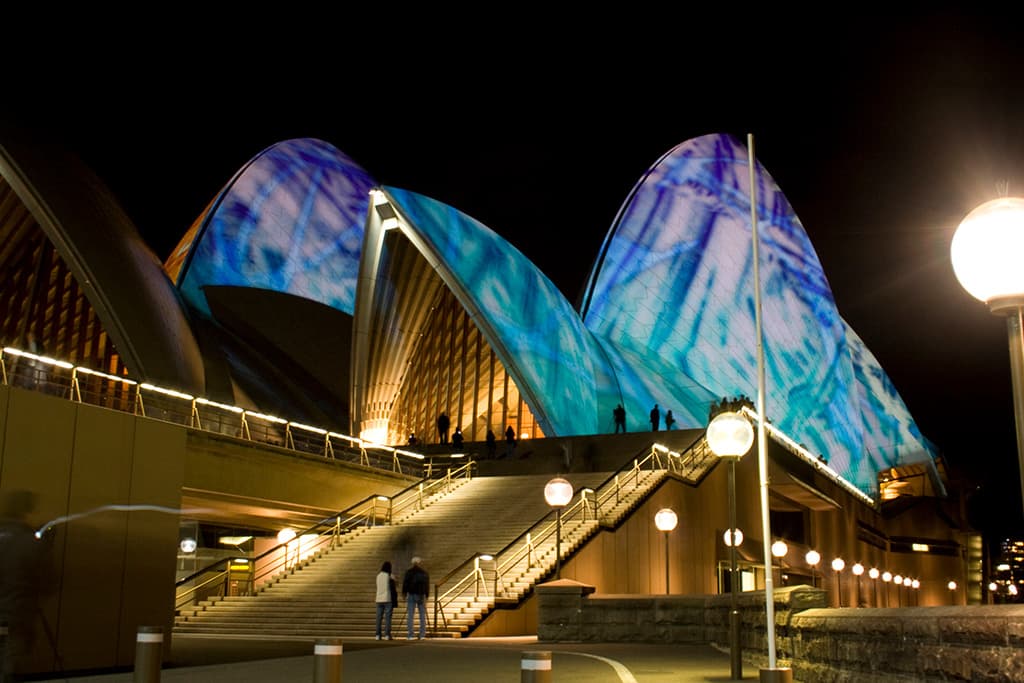
WINTER SAILS
Across Circular Quay, Lighting The Sails by Brian Eno, was a performance projection of light onto the world-renowned Sydney Opera House sails, “creating a living, interactive media façade on this white architectural canvas.” This hallmark of the event cleverly employed bespoke projection lenses (designed for the Beijing Olympic Ceremonies) improving magnification by 40% over standard optics, and resulting in enormously improved energy efficiency. Precise design of the pixel graphics ensured minimum light waste off the sails’ surface and improved footprint coverage, saving energy through minimised use of equipment. The projectors were entirely powered by biodiesel-fuelled generators – canola oil was the fuel of choice. The content was comprised of paintings selected from Eno’s body of work, displayed in a continuously changing projection which never repeated itself over the course of the festival.
Driven by Sydney-based firm, The Electric Canvas (TEC), along with production partner Big Picture, an array of 14 Christie Roadster S+20K data projectors, with lenses ranging from 7.5:1 to 11.2:1 over a throw distance of 450 metres covered the exterior of the Opera House. The digital projections were fed by five Onlyview timeline-based media server systems that managed the scaling and programming (another five were running as a parallel hot backup). The eastern side of the building was illuminated by four of TEC’s Xenon-powered E\T\C PIGI filmstrip projectors working with 10:1 lenses from an incredible 650 metres, under the control of another Onlyview system linked back via WiFi to the control point for monitoring. Spectators from Mrs Macquarie’s Point saw a slowly scrolling montage composed of images from Eno’s 30-year archive.
“”
I have never seen so many professional photographers around town before

ONLY A FAÇADE
The Electric Canvas was also instrumental in the design and installation of Façade – a series of architectural projections onto the Museum of Contemporary Art (MCA). This work used three of the E\T\C PIGI scrolling film projectors controlled by Onlyview and programmed for a repeating loop that ran from 6.00pm until midnight each night of the festival. This installation was also monitored via a WiFi link back at the central projection control.
Having so many stand-alone sculptures dotted about the city led to issues of power and weatherproofing. “Waterproofing was just one of the safety issues that we were dealing with. Where possible we recommended IP-rated equipment,” reports Andre Kecskes.
The Sydney Harbour Foreshore Authority offered assistance with local precinct power, however, some displays required very little power or they generated their own – like the Malvern Star-powered installation. Others, such as the work ‘Fireflies’, recharged their power supply during the day using solar panels.
It is interesting to the note the emphasis placed on LED lighting technology, its popularity no doubt derived from the perspective of the event founder. “As an architectural lighting designer and engineer, I enjoy designing and having a hands-on approach to what I do,” Mary-Anne Kyriakou said. “I am, and have been, a strong supporter of LED technologies for a long time. Smart Light Sydney is the first digital light art festival in the world. The majority of works created by the artists only use LED technology. There were no incandescent lamps used.”
While all outdoor events are undertaken at the mercy of the elements, heavy rain did dog the calendar during the festival, but didn’t deter the visitors. “We’ve had amazing feedback from all round,” Kyriakou said. “The festival was a celebration of lighting display, lighting ideas and lighting innovation. We like to think that this will inspire artists and the general public for next year or for other events like this. We hope people enjoyed the work and had lots of fun. I have never seen so many professional photographers around town before.”
NUTS ABOUT CREATIVITY
Smart Light Sydney was a cornerstone of Vivid Sydney, billed as the biggest international music and light festival in the Southern Hemisphere. Setting aside the recent economic troubles, it should be remembered that from 1996 to 2006 creative employment growth in NSW increased by 28%, against a total employment increase of 13.5%. (Source: DSRD (2009) NSW Creative Industry Economic Fundamentals.). Cultural festivals such as this reflect the AV industry’s contribution to any city’s culture, beyond arena spectaculars and corporate communications. Such events add personality, colour and parochial appeal to any urban landscape, as Mary-Anne Kyriakou summed up: “I have a 10-year plan for the festival and look forward to seeing it grow. For example, hot chocolate drinks and roasted nuts on the road side wouldn’t go astray for the night stroller.”
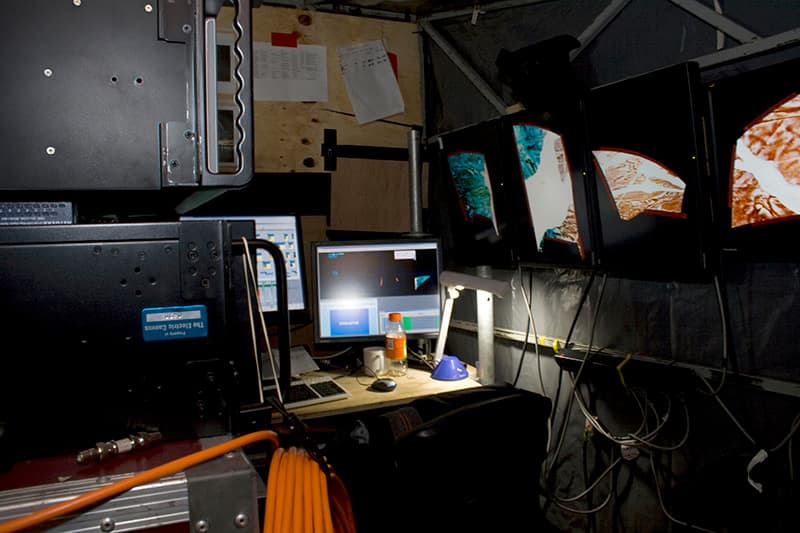
Thousands of visitors braved the wet Sydney winter to participate in the Sydney Opera House’s Luminous festival of music, debate, light and performance, curated by Brian Eno. Lighting The Sails was the very public face this contribution to Vivid Sydney.
Inset: The projection control room on Circular Quay. Onlyview servers, backup servers, UPSs and preview screens leave little room for an operator.
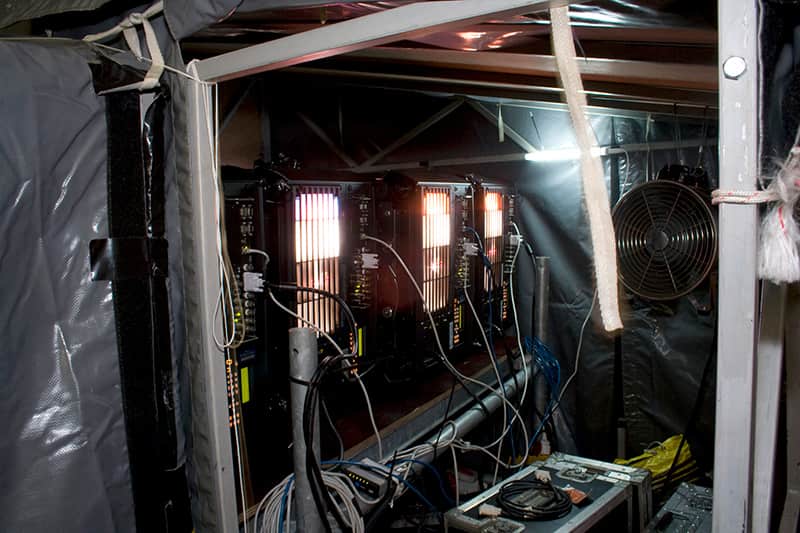
Having a little bit each way: Brian Eno’s Lighting The Sails on the left side of the Sydney Opera House provided by 14 Christie Roadster S+20Ks, and on the right side, a scrolling 30 year Eno retrospective delivered by 4 E\T\C PIGI projectors.
Inset: Some of the Christie Roadster projectors delivering the AV work Lighting The Sails.

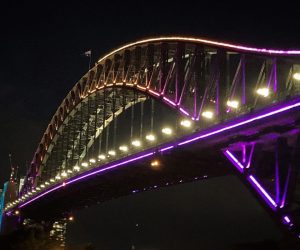



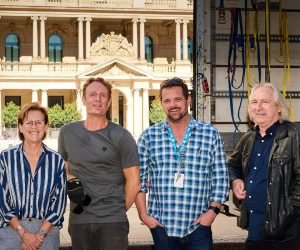
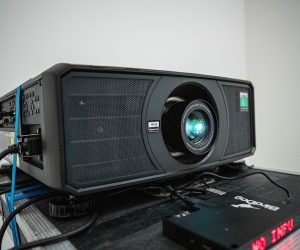


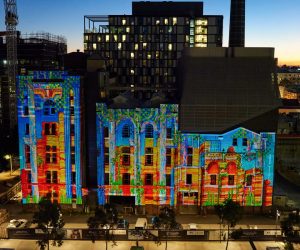

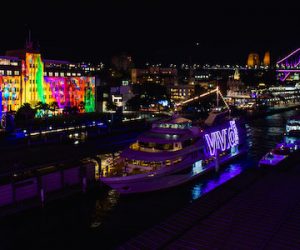



RESPONSES